Nursing organizations
- Nursing Board:
- Oversees nursing licenses;
- Provides nursing regulations guidance;
- Nursing Association:
- Represents nurses across the country;
- Supports high nursing standards.
The work of nurses in the U. S. is regulated and supported by different organizations, mainly they are Nursing boards and nursing associations. On a federal level they are represented by The National Council of State Boards of Nursing and the American Nursing Association.
The boards are responsible for overseeing different regulations. NCSBN also helps different boards across the country to communicate to together decide on the best policies for creating regulations. Boards also control the licensing of nurses, and takes disciplinary actions in case of any violation of the regulations.
Associations are more concerned with advocating for work and rights of practicing nurses. They support their interests, at the same time providing proper work conditions to ensure the high standards of their work.
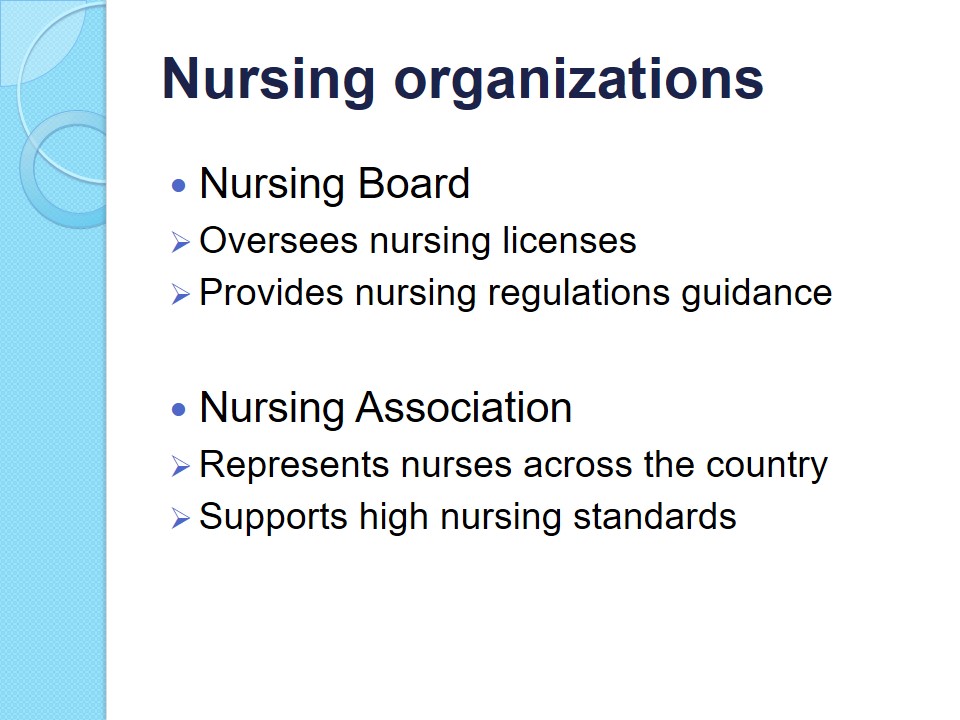
The Maryland Board of nursing
- 13 members.
- 8 RN members.
- 2 consumer members.
- 3 nursing educators.
Maryland nurse practice act – Health Occupations Article, Annotated Code of Maryland. (2012) BoardMembership (§ 202).
Maryland board of nursing is concerned with overseeing and developing the conditions or health services in the state. The board controls the quality of educational and training programs, and also certification exams and licensing.
The members of the Maryland Board of nursing are selected by the Governor of the state. They are appointed for 4-year terms and can be on the Board for 2 consecutive terms only. To become a member one should have specific qualifications, detailed membership conditions and terms are stated in the Nurse Practice Act – Maryland Health Occupations §202. The Current Board members are presided by Gary H. Hicks, RN. All the members are residing in Maryland.
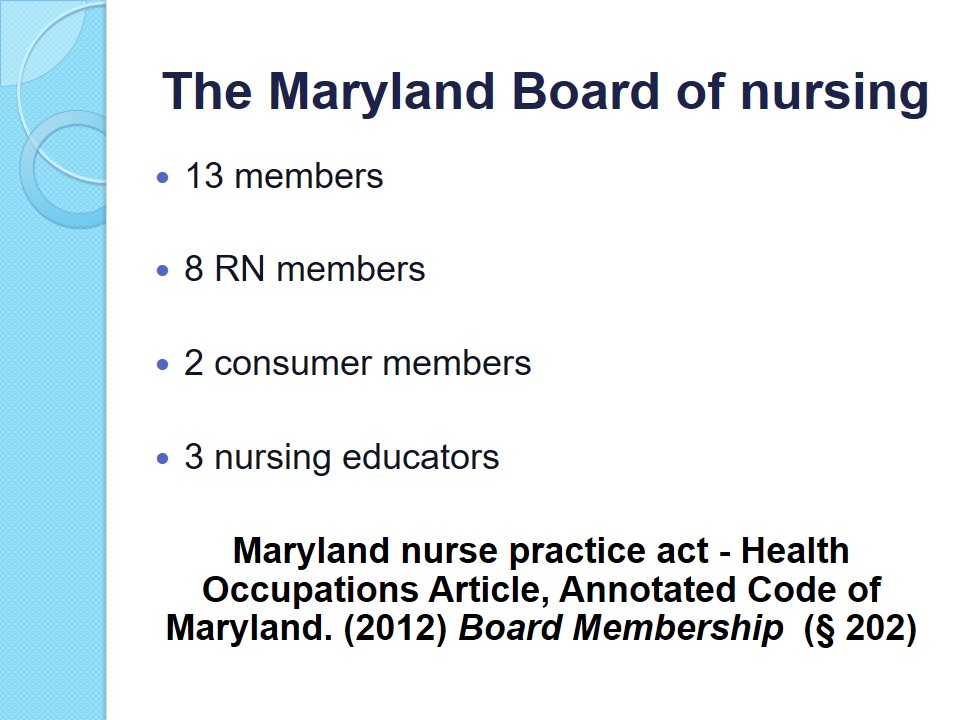
Patient Safety and Quality Improvement Act
- Created in 2005.
- Collects information about unsafe conditions.
- Advocates for workers revealing medical errors.
- Authorizes AHRQ to create a list of patient safety organizations.
The Patient Safety and Quality Improvement Act was created in 2005 and its main aim is to provide proper safety conditions in healthcare institutions. This law encourages and protects those who decide to report about unsafe conditions. This Act gives a right to HHS to impose civil money penalties in case if the confidentiality of the patient is violated.
Also, under this Act, the Agency for Healthcare Research and Quality creates a list of patient safety organizations, which then become responsible of collecting and reviewing patient safety data.
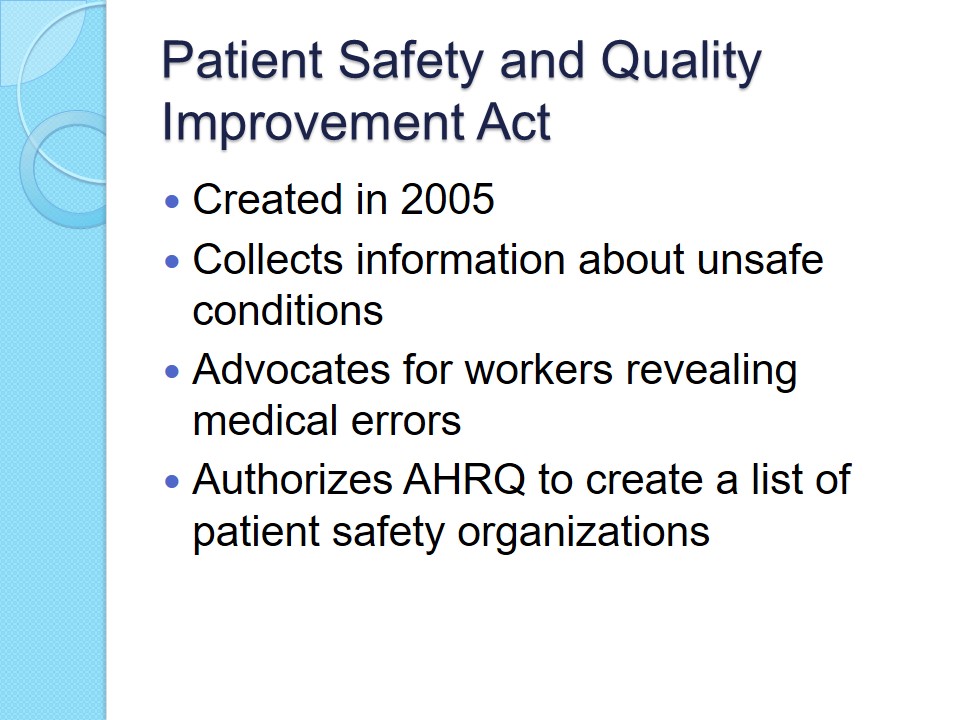
PSQIA benefits
- Improves the quality or healthcare.
- Helps create safer conditions.
- Encourages healthcare providers to report of unsafe conditions.
- Protects confidentiality.
The Patient Safety and Quality Improvement Act, by gathering information about violation of safety in healthcare institutions, makes it possible to ensure that patient safety meets the requirements. It also allows healthcare providers to eliminate fear about reporting violations. The act gives Federal legal privilege to those providing patient safety reports. By doing this, the Act ensures that not only the conditions for patients are safe, but also that the workers are given the opportunity to talk about the errors.
There has been no changes made to The Patient Safety and Quality Improvement Act in the last 5 years.

The Maryland Nurse Practice Act
- Provides individual scope of practice.
- Contains information on the training and education.
- Defines necessary experience and qualifications.
- States the conditions and terms or legal practice.
The Maryland Nurse Practice Act is a document, which regulates the scope of nursing practice aspects. It contains information on many points of becoming and being a nurse. It states the requirements of education and training, as well as experience and qualifications specifications for Advanced practice registered nurses, registered nurses, and licensed practical nurses.
What the Maryland Nurse Practice Act does not state are the regulations of the duties of nurses. The scope of practice should be defined by the nurse herself, but the standards of practice are stated in the Maryland Nurse Practice Act.
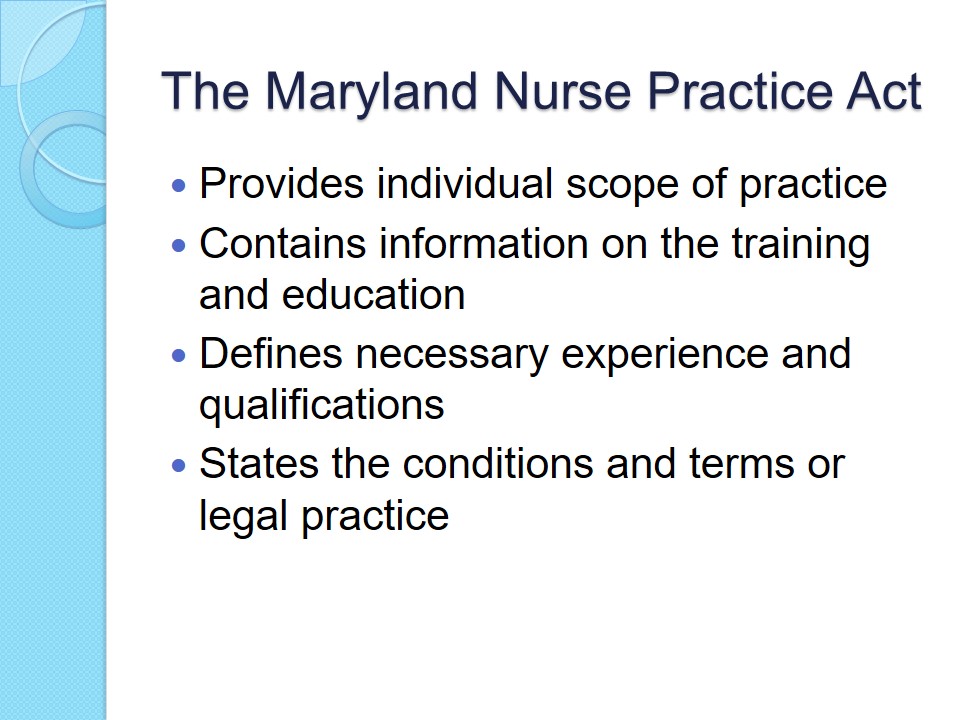
NPA effects
- Allows to set and oversee high standards of nursing.
- Oversees qualified delivery of medical services.
- Controls nurses’ competence by disciplinary actions implementation.
The Nurse Practice Act helps to make sure that the necessary standards for treating patients in healthcare institutions are met. It aims at helping nurses have all the necessary requirements for their scope of practice and, and a result, defines the appropriate skill set and behavior principles. It also states why and how nurses should be disciplined in case of any violation.
However, the Act itself contains a lot of useful data, but to ensure the compliance with it, a board of nursing is created, the members of which enforce the stated regulations.
This improves the quality of delivery in healthcare and helps to make sure that patients receive proper treatment for what they are paying for specific services.
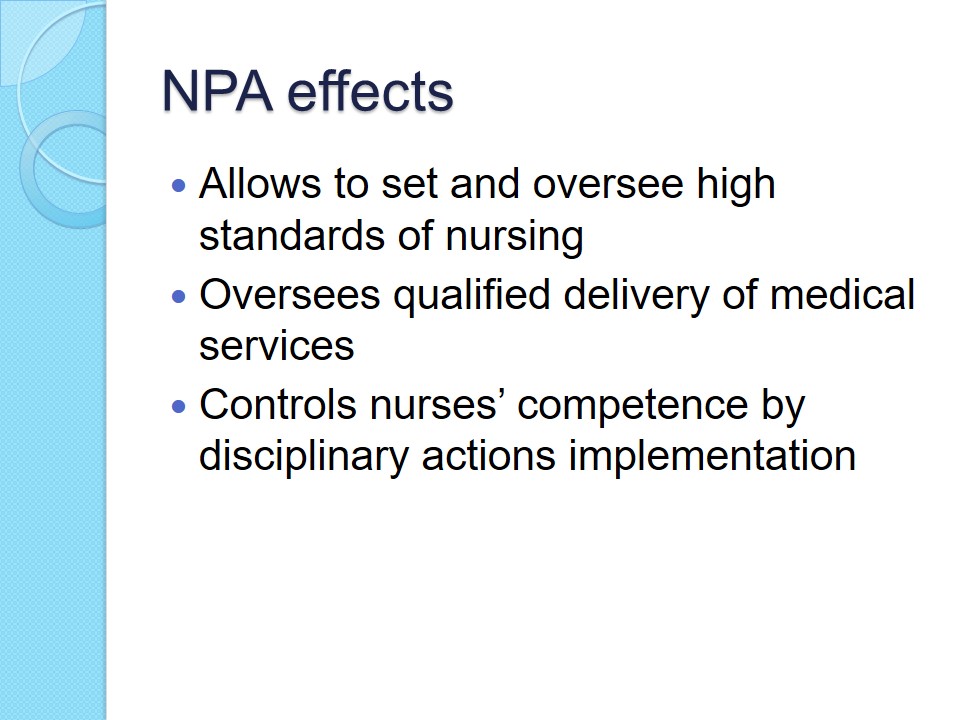
Works cited
Maryland Nurse Practice Act – Health Occupations Article, Annotated Code of Maryland. (2012). Board Membership (§ 202).
Patient Safety and Quality Improvement Act of 2005. (2005).
United States Code. (2006). The Public Health and Welfare. (Title 42, Chapter 6A, Subchapter VI).
Kathleen A. Russell. (2017). Nurse Practice Acts Guide and Govern: Update 2017. Continuing Education. Web.